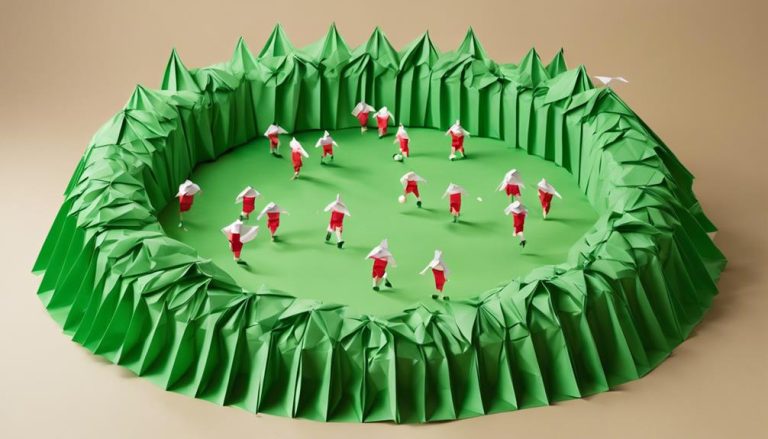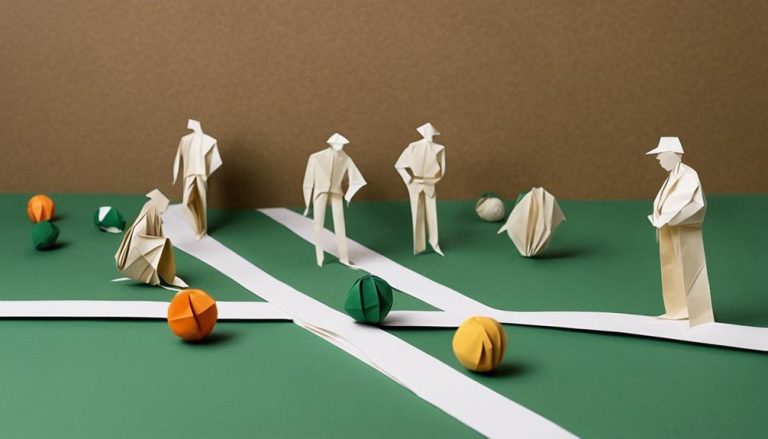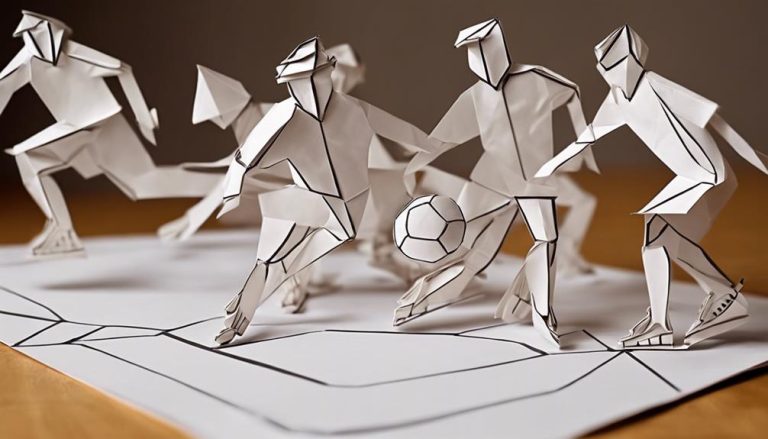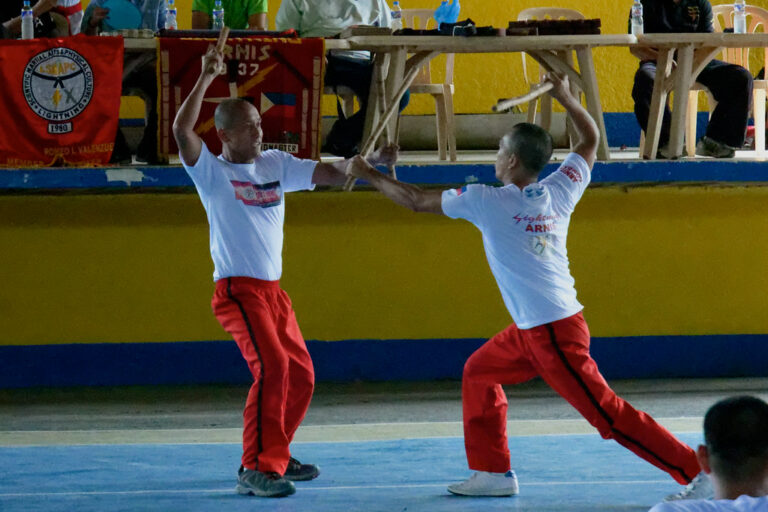General Rules of Rodeo Sport
Have you ever wondered about the intricate guidelines that govern the thrilling world of rodeo sport? From the adrenaline-pumping events to the meticulous scoring systems, there's a whole domain of rules and regulations that shape this enthralling sport. As you explore the inner workings of rodeo competitions, you'll uncover the fascinating blend of tradition, athleticism, and strategy that keeps both participants and spectators on the edge of their seats.
Rodeo Events and Scoring
When participating in rodeo events, understanding the scoring system is essential for competitors aiming to excel in the sport. In bull riding, one of the most thrilling rodeo events, both the rider and the bull are scored. The rider can earn up to 50 points based on their performance, which includes how well they stay on the bull and their style. The bull can also earn up to 50 points based on how difficult they are to ride. The scores are combined for a total out of 100. In barrel racing, a timed event where horse and rider maneuver around barrels in a cloverleaf pattern, speed is key. Knocking over a barrel results in a time penalty. The fastest time wins, making it crucial for competitors to balance speed with precision.
In bull riding, judges look for control, style, and technique. The rider must stay on the bull for a minimum of 8 seconds to qualify for a score. In barrel racing, precision in turning the barrels and speed in between are important. Each second counts, and even the slightest error can cost precious time. Understanding the nuances of scoring in these events can give competitors an edge in achieving success in the rodeo arena.
Participant Safety Regulations
To guarantee the well-being of all participants, strict safety regulations are enforced in rodeo sports. Safety is paramount, and rodeo organizers make certain that emergency procedures are in place at all times. Medical staff are on standby to provide immediate assistance if any injuries occur during the event.
- Risk Assessment: Before any rodeo event begins, a thorough risk assessment is conducted to identify potential hazards. This assessment helps in implementing preventive measures to reduce the likelihood of accidents.
- Participant Training: Competitors undergo rigorous training to prepare them for the challenges of rodeo sports. Training programs focus on developing skills, improving agility, and enhancing overall physical fitness to minimize the risk of injuries.
- Safety Gear Requirements: Participants are required to wear appropriate safety gear such as helmets, vests, and protective padding. These safety measures are mandatory to mitigate the impact of falls or contact with animals.
Animal Welfare Guidelines
When it comes to the welfare of animals in rodeo sport, certain standards must be met to guarantee their safety and well-being. These guidelines not only benefit the animals but also contribute to the overall success of the event. Implementing rider safety measures is equally vital to maintain a balance between the welfare of both animals and participants.
Animal Welfare Standards
Animal welfare standards in rodeo sport are important to guarantee the safety and well-being of the animals involved in the competition. Ensuring ethical treatment and upholding animal rights are fundamental aspects of maintaining high welfare practices and livestock care in rodeo events. To achieve this, the following measures are typically implemented:
- Regular Health Checks: Animals undergo routine health assessments to monitor their well-being and address any issues promptly.
- Proper Nutrition: Livestock are provided with balanced diets tailored to their nutritional needs to support their health and performance.
- Safe Handling Practices: Handlers are trained to interact with the animals in a way that minimizes stress and ensures their safety throughout the rodeo process.
Rider Safety Measures
Ensuring the safety of riders in rodeo sport involves implementing strict guidelines and protocols to minimize the risk of accidents and injuries during competitions. Helmet importance cannot be overstated in rodeo events. Wearing a properly fitted helmet is essential to protect against head injuries if a rider falls off or gets thrown from the animal. Safety precautions such as wearing protective vests and proper footwear are also critical. Risk management is a key aspect of rider safety, with organizers continuously evaluating and addressing potential hazards in the arena. Injury prevention strategies, including regular physical conditioning and training, play a crucial role in keeping riders safe during intense rodeo performances. By adhering to these safety measures, riders can enjoy the sport while minimizing the risk of harm.
Equipment Standards for Competitors
When preparing for a rodeo competition, it's vital to adhere to specific safety gear requirements to protect yourself from potential injuries. Additionally, the regulations on attire play a significant role in ensuring a fair and safe competitive environment for all participants. Understanding the equipment standards for competitors is essential for maintaining the integrity and safety of the rodeo sport.
Safety Gear Requirements
In order to compete safely in rodeo events, competitors must adhere to strict safety gear requirements and equipment standards. Ensuring your safety is vital in the adrenaline-filled world of rodeo. Here are essential safety gear requirements to keep in mind:
- Helmet Mandate: A properly fitting helmet is non-negotiable, providing essential head protection.
- Protective Vests: These vests are designed to absorb shock and reduce the risk of serious injuries to your chest and torso.
- Regular Gear Inspection: Regularly inspecting your safety gear is key to ensuring it is in good condition and can effectively protect you during the intense moments of the rodeo.
Regulation on Attire
To compete in rodeo events, you must adhere to specific regulations regarding your attire to meet the required equipment standards for a safe and successful performance. Rodeo attire has deep cultural significance and has evolved over time with changing fashion trends. Understanding the historical context of rodeo fashion can provide insights into the practicality and style of the clothing worn by competitors. Below is a breakdown of the essential attire components for rodeo competitors:
| Attire Component | Description | Importance |
|---|---|---|
| Cowboy Hat | Protects from the sun | Cultural significance |
| Boots | Provides ankle support | Fashion evolution |
| Jeans | Durable and protective | Historical context |
Ensuring that your attire meets these standards will not only enhance your performance but also showcase your respect for the traditions of rodeo sport.
Judging Criteria and Fairness
Understanding the intricacies of the judging criteria in rodeo sport is essential for ensuring fairness and accuracy in competition results. Fair judging and transparency are paramount in maintaining the integrity of the sport. Judges must adhere to strict guidelines to guarantee that each competitor is evaluated objectively. Here are three key aspects to mull over:
- Consistency: Judges must apply the same standards to all participants, regardless of their reputation or background. Consistency ensures that each rider is assessed based solely on their performance during the event.
- Impartiality: It is critical for judges to remain impartial and unbiased throughout the competition. Any hint of favoritism could compromise the fairness of the results and undermine the credibility of the sport.
- Clarity of Criteria: Clear and well-defined criteria should outline how performances are judged. This transparency not only helps participants understand what is expected of them but also allows the audience to follow along and appreciate the skills demonstrated.
Tradition and Cultural Significance
Exploring the deep-rooted traditions and cultural significance of rodeo sport exposes a rich tapestry of heritage and values. Rodeo's historical origins can be traced back to the traditions of Spanish ranching culture dating back to the late 1700s. The sport evolved as a way for cowboys to showcase their skills in roping, riding, and herding cattle. Over time, rodeo became not just a sport, but a way of life deeply ingrained in the Western ethos.
The cultural significance of rodeo extends beyond the arena, impacting communities in profound ways. Rodeo events bring people together, fostering a sense of camaraderie and shared experience. They provide a platform for individuals to celebrate their heritage and uphold traditions passed down through generations. Rodeo also plays a crucial role in preserving Western heritage and values, serving as a reminder of the hard work and dedication it takes to thrive in ranching and agricultural communities.
Additionally, rodeo events often feature elements of music, art, and cuisine that reflect the unique culture of the American West. Through rodeo, communities have the opportunity to showcase their local talents and craftsmanship, further enriching the cultural tapestry of the region. In summary, rodeo is more than just a sport; it is a celebration of history, community, and the enduring spirit of the American West.
Frequently Asked Questions
Can Spectators Participate in Rodeo Events?
You can't participate in rodeo events as a spectator. It's all about safety – these events require skilled riders. Spectator involvement is limited to watching and cheering for the competitors from the stands.
Are There Age Restrictions for Competitors in Rodeo Events?
You must meet specific age restrictions to compete in rodeo events. Different levels of competition may have varying age requirements, so it's important to check the guidelines before participating to make sure eligibility.
How Are Rodeo Venues Selected and Prepared for Events?
You'll be fascinated by the meticulous dance of selection process for rodeo venues. Imagining the dusty arenas being transformed, prepared for the thrilling events. The precision and care taken are truly a sight to behold.
Are There Any Specific Dietary or Training Requirements for Rodeo Athletes?
To excel in rodeo, you must adhere to specific dietary and training requirements. Athletes benefit from balanced nutrition, tailored workouts, and sometimes use nutritional supplements for enhanced performance. Success in rodeo demands dedication to these elements.
How Are Rodeo Events Promoted and Advertised to the Public?
To promote rodeo events effectively, engage in mesmerizing social media campaigns that showcase thrilling moments and behind-the-scenes action. Additionally, collaborate with local community events to reach a broader audience and create buzz around upcoming rodeos.





